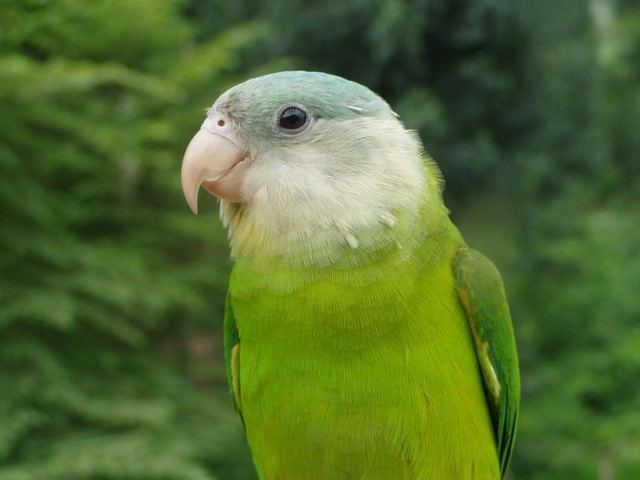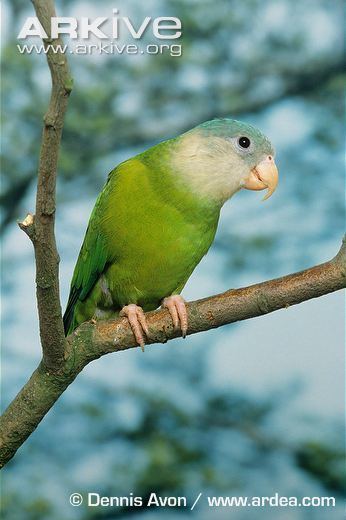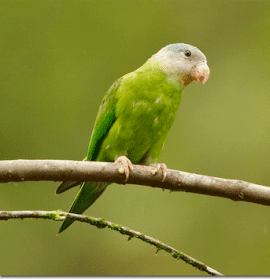Phylum Chordata Rank Species | Superfamily Psittacoidea Subfamily Arinae Scientific name Brotogeris pyrrhoptera Higher classification Brotogeris Order Parrot | |
Similar Brotogeris, Parrot, Bird, Golden‑winged parakeet, Tui parakeet | ||
Baby grey cheeked parakeets wanting to play
The grey-cheeked parakeet (Brotogeris pyrrhoptera), less commonly known as fire-winged parakeet, is a species of parrot in the family Psittacidae.
Contents
- Baby grey cheeked parakeets wanting to play
- Grey cheeked parakeets joy of toys2
- Taxonomy
- Description
- Distribution and habitat
- Breeding
- Status
- Aviculture
- References
Grey cheeked parakeets joy of toys2
Taxonomy
The grey-cheeked parakeet was described and named by John Latham in 1801.
Description

It is mostly green in color with characteristic gray cheeks and a gray-blue crown. The underside of the wings bears a bright orange swath between the lesser coverts and the mantle earning them the name "orange-flanked parakeet", and the primary flight feathers are normally blue or bluish green in color. Indeed, the species name pyrrhoptera, (lit. flame wing) gives light to these attributes. The average wingspan, length, and weight are 117 mm., 20 cm., and 54 grams, respectively. The average lifespan in captivity is approximately 23 years. Grey-cheeked parakeets vocalize quite loudly despite their size. The sound could be described as a quick, sharp screech, and vocalizations may involve many monotone screeches in succession.
Distribution and habitat

The grey-cheeked parakeet is indigenous to northwestern Peru and western Ecuador, living in subtropical or tropical regions encompassing dry forests, moist lowland forests, shrubland, and arable land.
Breeding
Grey-cheeked parakeets do not build their nests in the canopies of trees. Rather, they prefer to build their nests in protected areas such as active termite mounds or tree hollows. It is unknown why termites tolerate their presence. Their eggs, which are about 2 cm. x 1.6 cm. are laid in clutches of four to six eggs in a nest padded with moss. The hen will incubate the eggs for about 25–26 days while the male stands guard outside the nest.
Status

The grey-cheeked parakeet now faces habitat loss due to the irresponsible smuggling of pet birds and hunting due to their destruction of banana plantations. The species is now endangered with most populations existing within the homes of private individuals as pets. Because of this, efforts have been undertaken to save this and several other species of Brotogeris endemic to the region. It is protected by the Convention on the Conservation of Migratory Species of Wild Animals (also called the Bonn Convention or CMS).
Aviculture

Even in its native home, the grey-cheeked parakeet is widely kept as a pet. With patience, these birds may be taught to mimic human sounds, albeit without the clarity of larger parrots.
